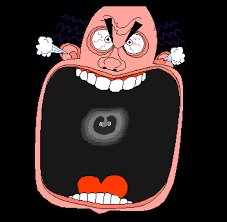April 26, 2010
25 SEBAB SUAMI MARAH PADA ISTERI.....renung2kan...



1. Memperkecil suami dihadapan orang lain antara sedar dan tidak walaupun ianya benar ie. “hubby i tu kan kan..memancing ikan pun dia tak tau.. bla bla bla ”
Posted by Siti Mardiana Bt Yaakob at Monday, April 26, 2010 0 comments
April 21, 2010
Tips 4 writing biology essay



1. The first thing that you should do is to carefully read the question. The second thing that you should do is to carefully read the question. The third thing that you should do is to carefully read the question. Be sure to answer the question asked and only that question; answer all parts of it.
Posted by Siti Mardiana Bt Yaakob at Wednesday, April 21, 2010 0 comments
Labels: essay
April 19, 2010
muat satu kampung
Emm.. muat satu kampung ni ![]()
![]()

Posted by Siti Mardiana Bt Yaakob at Monday, April 19, 2010 0 comments
April 06, 2010
optimum digestion, assimilation and elimination
Posted by Siti Mardiana Bt Yaakob at Tuesday, April 06, 2010 0 comments
Labels: assimilation, digestion, elimination
Nucleic Acids
Posted by Siti Mardiana Bt Yaakob at Tuesday, April 06, 2010 0 comments
Labels: Nucleic Acids
LAWAKS HAHAHAHAHAHA/\......
NAMA-NAMA JEPUN.....
Itosayasuka
1.Yg pemarah- KEJI CACIMAKI
2. Yg tak suka brg mahal- SATO SUKAMURA
3. Yg bisu- KITA TADASUARA
4. Yg suka makan tose- NANACHI HITOSE
5. Yg suka lagu blues- APO NADIKATO
6.Yg suka belajar- ASIKO ULANGKAJI
7. Yg kerap bikin ribut- WAKASI HURUHARA
8. Yg masih bujang- MATIMATI TAMOKASI
9 .Yg asyik berbini - ASIKO GILOBETINOKO
SYUKURLAH AD ISTERI...JGN CARI GALPREN LEN...
Wife is like TV, girlfriend is like Handphone (HP)
At home watch TV, go out bring HP.
No money, sell TV. Got money change HP.
Sometimes enjoy TV, but most of the time play with HP.
TV free for life but HP, if you don't pay the services will be terminated
TV is big, bulky and most of the time old, but handphone is cute, slim,
curvy and very portable at any time.
Operational cost for TV is often acceptable but for HP is high and often demanding,
Most Important, TV got remote.. HP don't have..
Last but not least....... .
TV do not have virus, but h/p yes......... .have VIRUS....... ........ once get it, terus KONG........ hahahahaha. .....
so better choose TV .....
Posted by Siti Mardiana Bt Yaakob at Tuesday, April 06, 2010 0 comments
Kepada lelaki2 tak hensem...jangan kecik hati pulak ye :-)
Kalau lelaki handsome pendiam Perempuan akan cakap: woow, cool gila...
kalau lelaki tak handsome pendiamPerempuan akan cakap: eh perasan bagus...
kalau lelaki handsome berbuat jahatPerempuan akan kata: nobody's perfect
kalau lelaki tak handsome berbuat jahatperempuan akan cakap: memang.... muka pun macam pecah rumah!
kalau lelaki handsome menolong perempuan yang digangguperempuan akan cakap: wah.. machonya.. macam hero filem!
kalau lelaki tak handsome menolong perempuan yang diganggu
Perempuan akan kata: entah2 kawan dia...
kalau lelaki handsome dapat perempuan cantikperempuan akan kata: sepadan sangat...
kalau lelaki tak handsome dapat perempuan cantikperempuan akan kata: mesti kena bomoh perempuan itu!
kalau lelaki handsome ditinggal kekasihperempuan akan kata: jangan sedih, kan saya ada..
kalau lelaki tak handsome ditinggal kekasihperempuan akan kata:...(terdiam, tapi telunjuknya
meliuk-liuk dari atas ke bawah, patutlah, tengok saja luarannya)...
kalau lelaki handsome penyayang binatangperempuan akan cakap: perasaannya halus...penuh kasih sayang
kalau lelaki tak handsome penyayang binatangperempuan akan cakap: sesama keluarga memang harus menyayangi...
kalau lelaki handsome bawa BMWperempuan akan cakap: matching... hebat luar dalam
kalau lelaki tak handsome bawa BMWperempuan akan cakap: bang, bosnya mana?...
kalau lelaki handsome tak mahu bergambarperempuan akan cakap: pasti takut kalau-kalau gambarnya tersebar
kalau lelaki tak handsome tak mahu bergambarperempuan akan kata: tak sanggup melihat hasilnya ya?...
kalau lelaki handsome menuang air ke gelas perempuanperempuan akan cakap:ini barulah lelaki gentlemen
kalau lelaki tak handsome menuang air ke gelas perempuanperempuan akan cakap: naluri pembantu, memang begitu....
kalau lelaki handsome bersedih hatiperempuan akan cakap: let me be your shoulder to cry on
kalau lelaki tak handsome bersedih hatiperempuan akan kata: kuat nangis!! lelaki ke bukan ni?
P/s: Kepada lelaki2 tak hensem...jangan kecik hati pulak ye :-)
Posted by Siti Mardiana Bt Yaakob at Tuesday, April 06, 2010 0 comments
anda girl type apa?
YPE OF GIRLS…ZAMAN KINI.. dan nama-namanya sempena istilah-istilah di zaman komputer dan internet:
HARD DISK GIRLS:
she remembers everything, FOREVER
(dia ingat semua perkara selama-lamanya - kalau tak rosak la)
RAM GIRLS:
she forget about you, the moment you turn her off
(dia akan lupakan anda, bila anda menolaknya)
WINDOW GIRLS:
everyone know that she can’t do a thing right, but no one can live without her.
(semua orang tahu bahawa dia tidak mampu buat apa pun dengan betul, tapi tidak ada seorang pun yang boleh hidup tanpanya)
SCREENSAVER GIRLS:
she is good for nothing but at least she is fun
(dia tidak berguna pun tapi menyeronokkan)
INTERNET GIRLS:
Difficult to access
(susah untuk diakses)
SERVER GIRLS:
Always busy when you need her
(sentiasa sibuk bila anda perlukannya)
MULTIMEDIA GIRLS:
She make horrible thing look beautiful
(benda yang hodoh dia boleh tukarkan jadi cantik)
CD-ROM GIRLS:
She is always faster and faster.
(dia semakin laju dan laju)
EMAIL GIRLS:
Every ten things she says, eight are nonsense
(setiap sepuluh perkara yang dia cakap, lapan adalah mengarut)
VIRUS GIRLS:
Also
known as “wife” when you are not expecting her, she comes, install
herself and uses all your resources. If you try to uninstall her you
will lose something, if you don’t try uninstall her you will lose
everything…
(juga dikenali sebagai “isteri” bila anda tidak menjangka, dia datang,
melekat dan gunakan semua sumber anda. Jika anda mahu buang dia maka
anda akan kehilangan sesuatu, jika anda tidak buang dia maka anda akan
kehilangan kesemuanya….)
Anda gadis yang mana satu?
Posted by Siti Mardiana Bt Yaakob at Tuesday, April 06, 2010 0 comments
Lawak Daddy dan anak...hahahahahaha
Suatu pagi seorang anak yang baru masuk sekolah primary bertanya kepada daddynya,
'Daddy.daddy .... sex tu apa, daddy ....?'
Terkulat-kulat si ayah. Terfikir dia tentang arus kemodenan zaman sekarang yang membuatkan manusia berfikiran terbuka, termasuklah anak-anak yang masih kecil. Sesuai dengan konsep pendidikan seks yang sedang hangat dibincangkan, mulalah si ayah mencari-cari jawapan yang sesuai dengan harapan anaknya takkan tertinggal dalam arus pendidikan moden.
Maka si ayah pun memberikan jawapan secara mengkiaskan kumbang dan bunga, telur yang yang menetaskan berudu dan seterusnya menjadi katak, hujan serta benih yang mencetuskan tunas, diikuti dengan pembentukan bayi dalam kandungan.
Sebelum mengakhiri jawapannya itu, si ayah menyelitkan pula kisah percintaan antara dia dan mamanya sejak dari zaman sekolah menengah lagi hinggalah kepada kelahiran seorang bayi comel iaitu si anak yang bertanya itu. Tiba-tiba si anak menangis teresak-esak. Si ayah kehairanan.
'Eh kenapa ni?'
Si ayah bertanya kehairanan. Si anak masih juga menangis.
'Jawapan daddy tu panjang sangat, tapi tempat nak tulis jawapan ni pendek. Daddy ajalah yang tulis, waaaaa!!!!'
Kata si anak lantas menyerahkan buku latihan Bahasa Inggerisnya yang pada muka depan tertulis.... ..
SCROLL DOWN ....

Posted by Siti Mardiana Bt Yaakob at Tuesday, April 06, 2010 0 comments
Labels: Lawak





